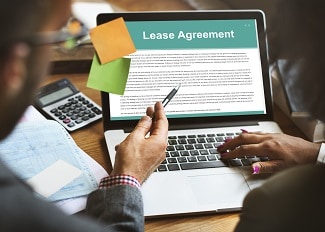Understanding Rental Lease Agreements: A Landlord’s Guide
A solid rental lease agreement is the foundation of a successful landlord-tenant relationship, ensuring clarity, protection, and a pleasant living experience. In this guide, we delve into the intricacies of residential rental agreements and apartment lease agreements, offering expert insights and practical tips to help you craft impeccable rental property leases. Whether you’re a seasoned landlord or just starting out, our comprehensive resource will empower you with the knowledge needed to create foolproof rental lease agreements that benefit both you and your tenants.
What Are Rental Lease Agreements?

Whether it’s for a residential property rental agreement or a lease agreement for your apartment, a rental property lease agreement grants stability and structure to both parties. For instance, by specifying the rental cost and the lease duration, landlords and tenants can plan their financial commitments and living arrangements with confidence. This structured approach ensures that everyone is on the same page, minimizing misunderstandings and conflicts down the line.
Why Are Rental Lease Agreements Important?
Rental lease agreements serve as crucial safeguards for landlords and tenants alike. By setting out explicit rules and responsibilities, these agreements preempt potential conflicts, promoting a positive tenant-landlord rapport. They establish a predictable rental income stream for landlords, ensuring financial stability. Moreover, lease agreements provide a roadmap for both parties, clarifying rent timelines, maintenance duties, and the lease duration.
Without residential rental agreements or a lease agreement for an apartment, things can get confusing. Disagreements can grow because nobody is sure about the rules. Landlords might not get rent on time, and tenants might not know what to expect.
Why Should You Use a State-Specific Lease?
Not all states have the same rules when it comes to renting. Rental laws can vary from place to place, and that’s why using a lease that’s specific to your state is a smart move. When you use a state-specific lease agreement, you’re tailoring your rental arrangement to match the laws that govern where your property is. By using a lease that’s designed for your state, you’re making sure you’re following the right rules and avoiding legal troubles down the road.
Creating a Rental Lease Agreement
Ensure State-Specific Precision
Before you set up a lease, make it state-specific. That’s because each state has its unique landlord-tenant laws, and a cookie-cutter lease won’t cut it. Your lease should comply with your state’s regulations to keep things legal and smooth.
Choose Between Month-to-Month and Annual Leases
An annual lease means that you have a tenant locked in for a fixed term, which offers stability. On the flip side, a month-to-month setup provides the flexibility necessary for changing circumstances. Each has its perks, and your choice depends on your goals as a landlord.
Need a Lease Agreement?
Access 150+ state-specific legal landlord forms, including a lease.
Utilizing Software for Lease Agreements
Property management tools offer landlords efficiency and accuracy. Using software for lease agreements offers several benefits. It ensures the legal compliance and customization necessary to match specific state regulations. It simplifies drafting, minimizes errors, and saves valuable time. The software’s digital nature promotes convenient storage, retrieval, and sharing of lease documents. Furthermore, it enables quick updates to adapt to changing laws.
You may also come across free rental lease templates, which might be appealing to cost-conscious landlords. However, it may not be the best option for you. Most of the free templates do not outline the rights and responsibilities of both you and your tenant. It is also likely that they aren’t customized to the specific rules and regulations of your location.
Rental Property Lease Agreements: Frequently Asked Questions
Indeed, a lease is a legally binding document that outlines the terms and conditions of a rental arrangement. This agreement establishes the rights and obligations of both landlords and tenants for a specified period, fostering a structured and accountable landlord-tenant relationship.
When it comes to drafting a lease, simplicity and accuracy matter. The “Residential Lease Agreements: Best Software for Small Landlords” guide sheds light on efficient methods. This resource underscores the value of property management software that tailors lease agreements to state-specific regulations, simplifying the process and ensuring compliance.
While both serve similar purposes, there’s a distinction between a lease and a rental agreement. A lease usually runs for a fixed term, outlining specific obligations, whereas a rental agreement often involves a more flexible, month-to-month arrangement. Understanding this difference helps in choosing the right option for your property.
In the era of digital convenience, remote lease signing is viable. With technology playing a pivotal role, remote signing not only enhances efficiency but also simplifies the tenant onboarding process.
Rental lease agreements stand as the cornerstone of successful landlord-tenant relationships. These legally binding documents establish rules, outline responsibilities, and provide a roadmap for a harmonious coexistence. By understanding the nuances of state-specific laws, harnessing technology to streamline drafting, and differentiating between various lease types, landlords can navigate challenges easily.
With the help of valuable resources, from emotional support animals to remote lease signing, landlords are equipped to foster transparent, compliant, and thriving rental arrangements. Whether you need an agreement for your residential rental property or a lease agreement for an apartment, a well-crafted rental property lease agreement safeguards interests and builds a mutually beneficial tenant-landlord partnership.
Source: Edited article by Landlord Gurus















 Accessibility
Accessibility